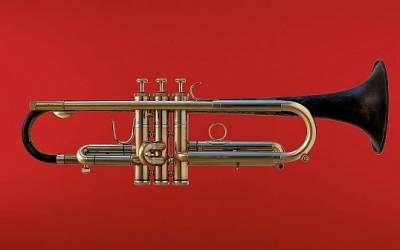

That's for discussion on another day though! You will sometimes see other components manufactured in different materials, sometimes nickel silver is used on trombone slide legs or tuning slides and there are even instruments with sterling silver bells. The leadpipe of an instrument also occasionally has a different brass from the main body of the instrument. The main place for a different type of brass to be used is typically the 'bell' section as this has by far the most influence on the overall sound produced.

Manufacturers vary in their choice with some using the same brass alloy for an entire instrument and others changing it for certain components. It is often used for the leadpipe (the main tube nearest to the mouthpiece) of student instruments as it helps to prevent 'red rot', a corrosion caused by the build up of acidic dirt / saliva inside the tubing. It gives a warmer and mellower tone but doesn't project as well as alloys with higher zinc content as it is a softer metal. Red Brass Also known as Rose brass, this has the highest copper content at around 90%.

This gives the instrument a broader, fuller tone whilst still retaining a good level of projection. Gold Brass As the name implies, gold brass has a slightly darker colour due to the higher copper content (85%) within the alloy. A very resonant alloy (70% copper) which produces a bright and direct tone that 'cuts through', making it perfect for those trumpet fanfares. Yellow Brass The industry standard, if an instrument spec doesn't specify then you can fairly confidently assume it's yellow. There are generally 3 main types of brass alloy used in musical instrument manufacture today. Generally, the softer the material the warmer and darker the sound produced harder metal gives a brighter and more responsive sound. It is primarily made up of Copper and Zinc and the proportions in which these are used affects the type of brass alloy produced. Putting that aside though, if you are interested in in finding out a bit more (and I appreciate it's not a particularly interesting topic!) then here's some basic guidance.īrass is used for manufacturing musical instruments as it is a malleable metal with excellent acoustic properties.

You need to be a competent player that produces a good basic tone on your instrument for any difference to be noticeable. When looking to buy a new brass instrument you will probably see products described as having a 'gold brass bell'or a 'red brass leadpipe' but what difference does the brass alloy actually make? There is no doubt that the differences are subtle and for all but the most advanced players arguably irrelevant.


 0 kommentar(er)
0 kommentar(er)
